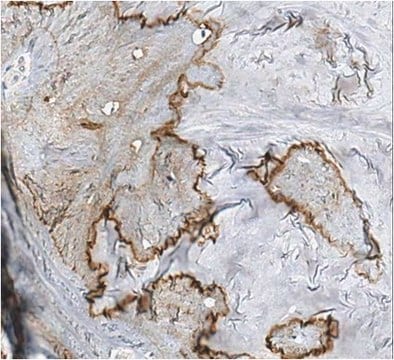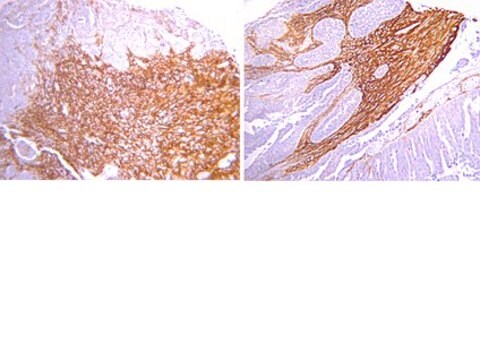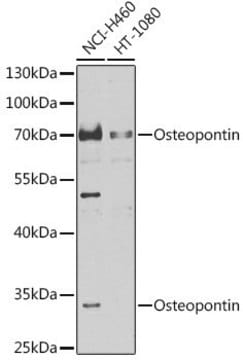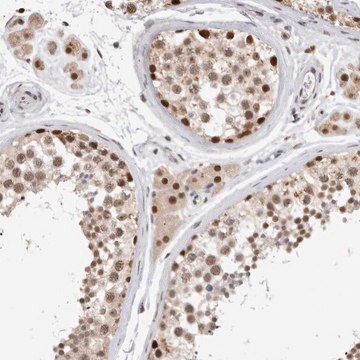AB10911
Anti-Osteocalcin Antibody
serum, from rabbit
Sinônimo(s):
Bone Gla protein, Gamma-carboxyglutamic acid-containing protein, bone gamma-carboxyglutamate (gla) protein (osteocalcin)
About This Item
Produtos recomendados
fonte biológica
rabbit
Nível de qualidade
forma do anticorpo
serum
tipo de produto de anticorpo
primary antibodies
clone
polyclonal
reatividade de espécies
human, rat, mouse
técnica(s)
immunohistochemistry: suitable
western blot: suitable
nº de adesão NCBI
nº de adesão UniProt
Condições de expedição
wet ice
modificação pós-traducional do alvo
unmodified
Informações sobre genes
human ... BGLAP(632)
mouse ... Bglap(12096)
rat ... Bglap(25295)
Descrição geral
Especificidade
Imunogênio
Aplicação
Qualidade
Western Blot Analysis:
1:500 - 1:5,000 dilution of this antibody detected osteocalcin in 10 μg of human heart lysate.
Descrição-alvo
*Band of ~22 kDa is observed. The difference between observed and expected band may be due to post-translational modifications.
Ligação
Not finding the right product?
Try our Ferramenta de seleção de produtos.
recomendado
Código de classe de armazenamento
10 - Combustible liquids
Classe de risco de água (WGK)
WGK 1
Certificados de análise (COA)
Busque Certificados de análise (COA) digitando o Número do Lote do produto. Os números de lote e remessa podem ser encontrados no rótulo de um produto após a palavra “Lot” ou “Batch”.
Já possui este produto?
Encontre a documentação dos produtos que você adquiriu recentemente na biblioteca de documentos.
Os clientes também visualizaram
Nossa equipe de cientistas tem experiência em todas as áreas de pesquisa, incluindo Life Sciences, ciência de materiais, síntese química, cromatografia, química analítica e muitas outras.
Entre em contato com a assistência técnica









